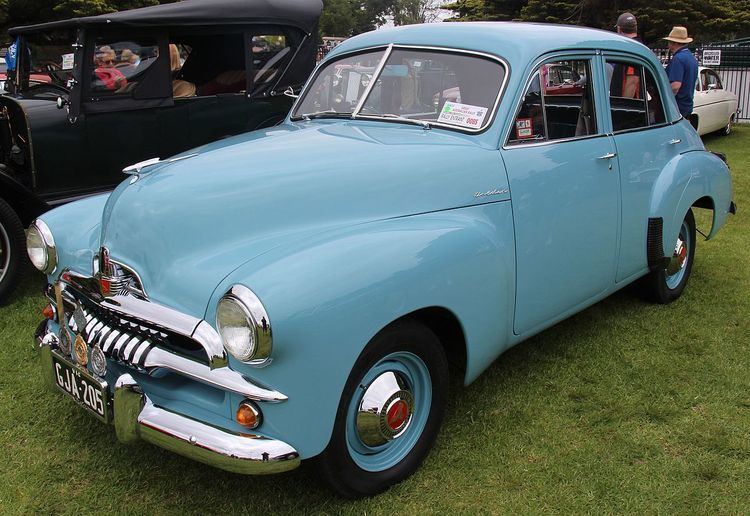Production 1953–1956 | ||
 | ||
The Holden FJ series is a range of motor vehicles which was produced in Australia by Holden from 1953 to 1957. The FJ was the second model of an "all Australian car" manufactured by Holden and was based upon the established 48-215 series, commonly referred to as the "FX". The sedan, in Standard, Business and Special trim levels, and a coupe utility were announced in October 1953 and were followed by a Panel van derivative in December of that year. A wagon prototype was built but the bodystyle was not put into production. In 1954, Holden's first exports began with sales of the FJ in New Zealand.
The FJ, of monocoque construction, broadly followed the silhouette of its predecessor, but featured a bolder horizontal styled front grille, along with comfort and decoration upgrades in a new sedan model named the 'Holden Special'.
Originally specified as 60 bhp (45 kW) achieved at 3,800 rpm, the claimed maximum power output from the six-cylinder engine was increased to 65 bhp (48 kW) achieved at 4,000 rpm.
In 1955 the car underwent a mild interior facelift for the Holden Special sedan, along with a variation in paint and trim options. The FJ series was progressively replaced by models from the Holden FE series from July 1956 to May 1957 with a total of 169,969 examples produced.
There are nearly 20 specific FX-FJ Holden Car Clubs of Australia with members committed to preserving these iconic Holdens. These clubs organise a national gathering for FX-FJ Holden enthusiasts every second year.
Efijy concept car
Holden paid homage to the FJ with a 21st-century version of the iconic car, the Efijy.
